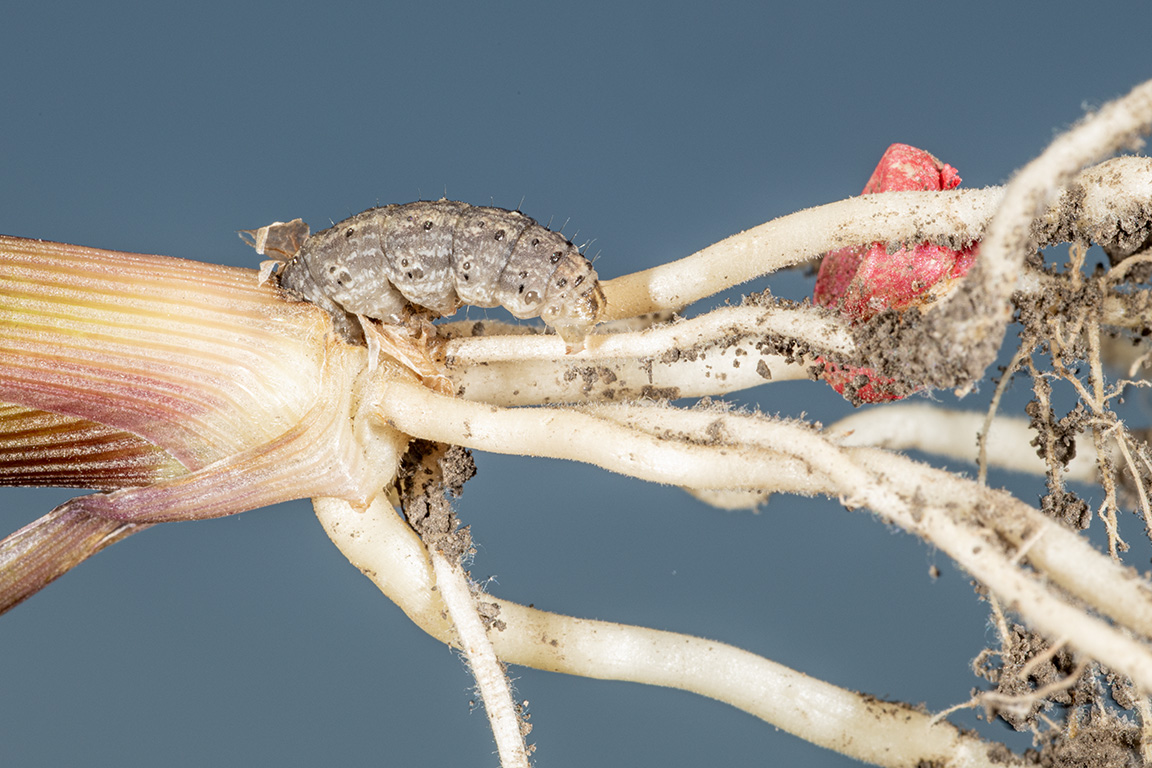This week, I was contacted about a 300+ acre, 5-6 leaf cornfield with multiple problems, described as plants dying and toppling over with feeding damage at the base of the roots. The only critter found, pictured, and sent to me was a ground beetle (beneficial insect). Compounding the issue is that the topsoil is very dry.
Curiosity aroused, I agreed to meet the producer and agronomist for a look. While heading into the field, I didn’t make it beyond the end rows before encountering dead, wilting, dead-heart, and toppled corn. Digs near the base of plants, revealed very large black cutworm larvae. These were whoppers…fishing bait!!! Some cutworms were drilling into the base of the plant and tunneling into the stalk. It was evident that this damage had been going on for weeks, as dead plants from some time ago, laid in waste giving rise to skips in rows.

Range of symptoms from dead, dead-heart, wilting, and toppled plants. (Photo Credit: John Obermeyer)
In discussion with the producer, he admitted that winter annual weeds were present before planting the second week of May. I attempted to share about the tremendous black cutworm moth arrival into the state (thanks again moth trappers!) and that seed-applied insecticides (his seed had the high-rate) aren’t very effective against moderate-high infestations. He wasn’t as interested in the past, but rather the present, that being should he still spray. My attempt to educate on cutworm biology, about how these large larvae’s movement from plant to plant is about over and they are soon to pupate fell on deaf ears. Lastly, I attempted to explain that with such a dry topsoil, foliar insecticides would not get to the cutworms that were below the soil near the plant base. Bottom line, damage was done, revenge spraying wouldn’t help.
Scouting this field two to three weeks ago would have caught the infestation early, rescue treatments would have been effective, thousands of plants per acre could have been saved. There is little more to say.
Happy scouting!







